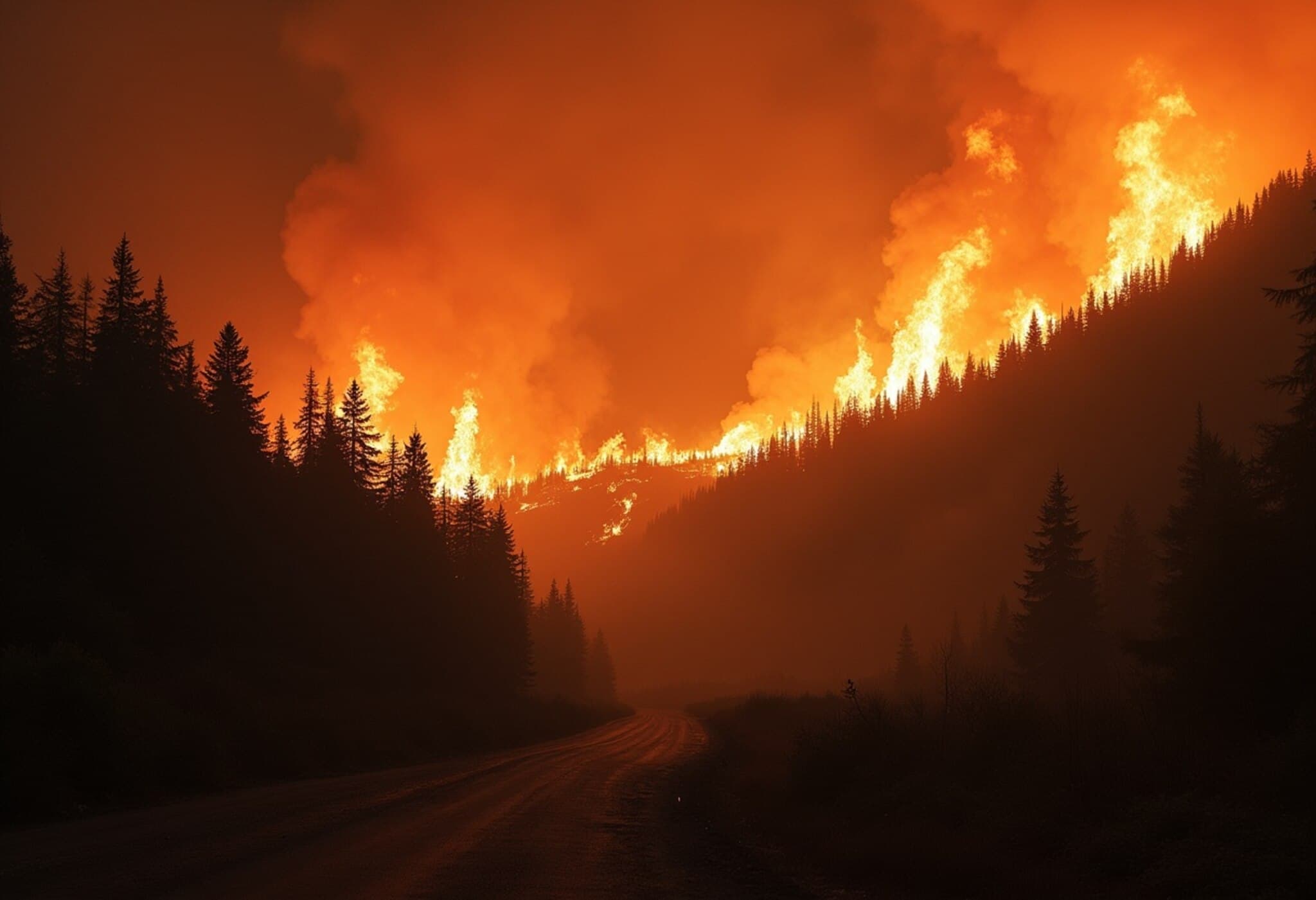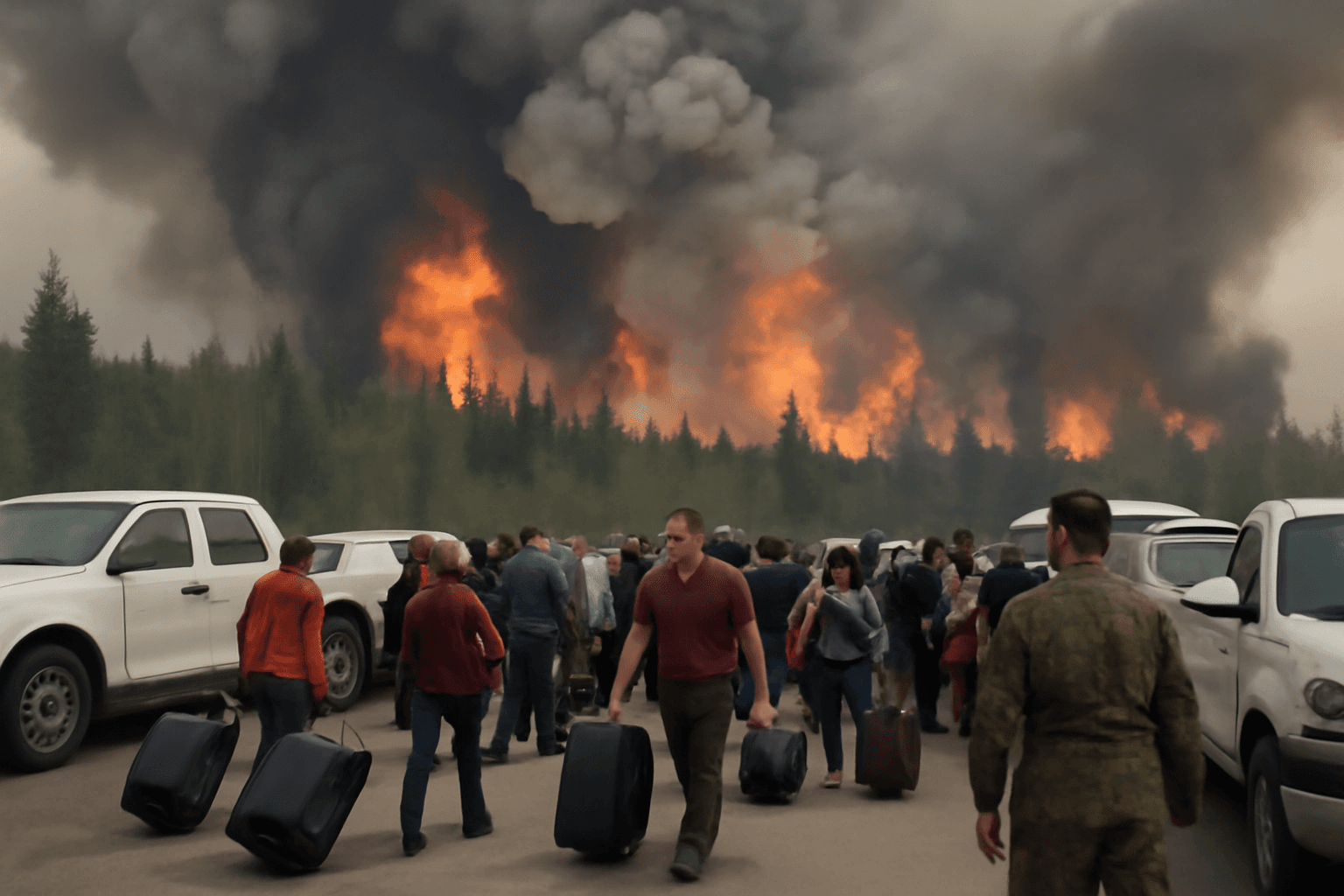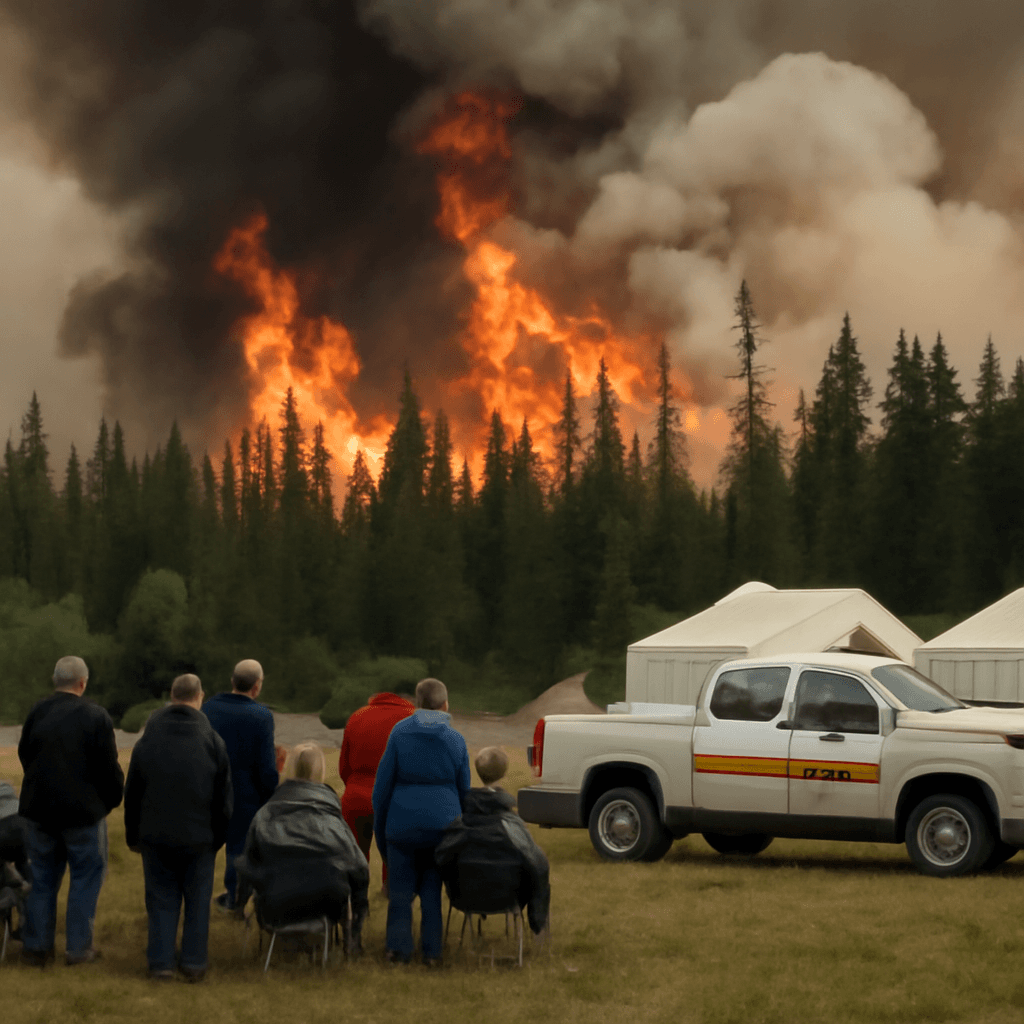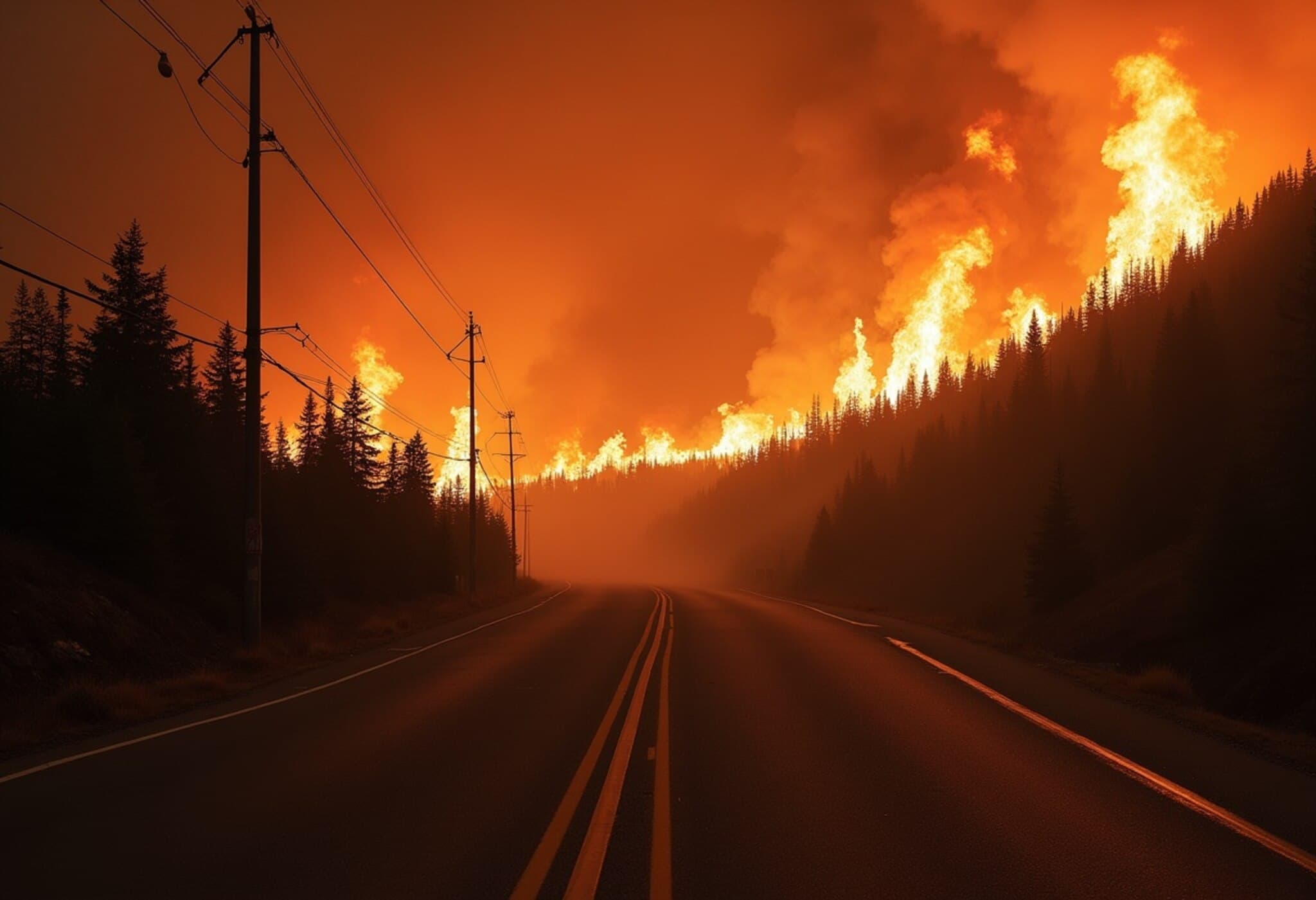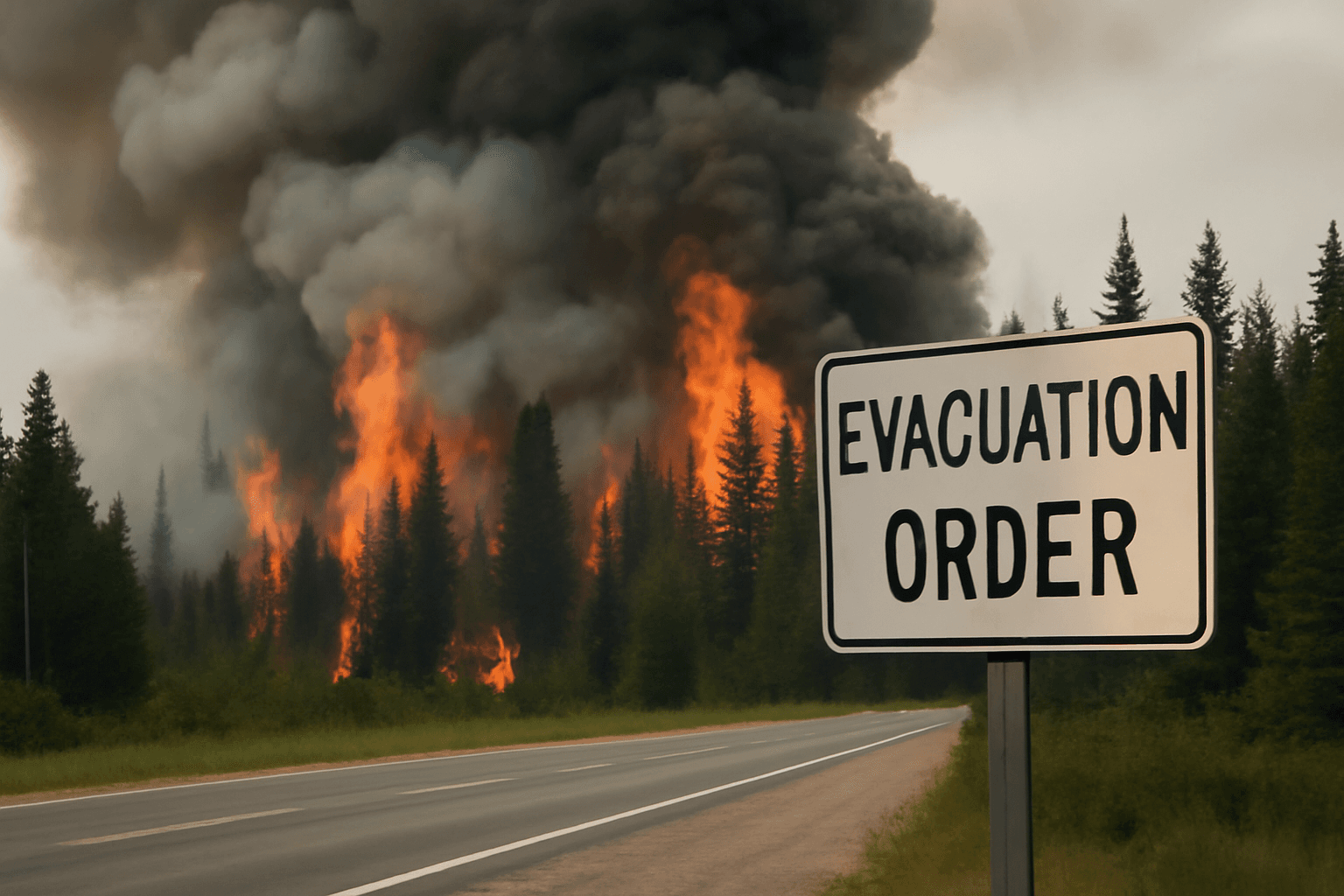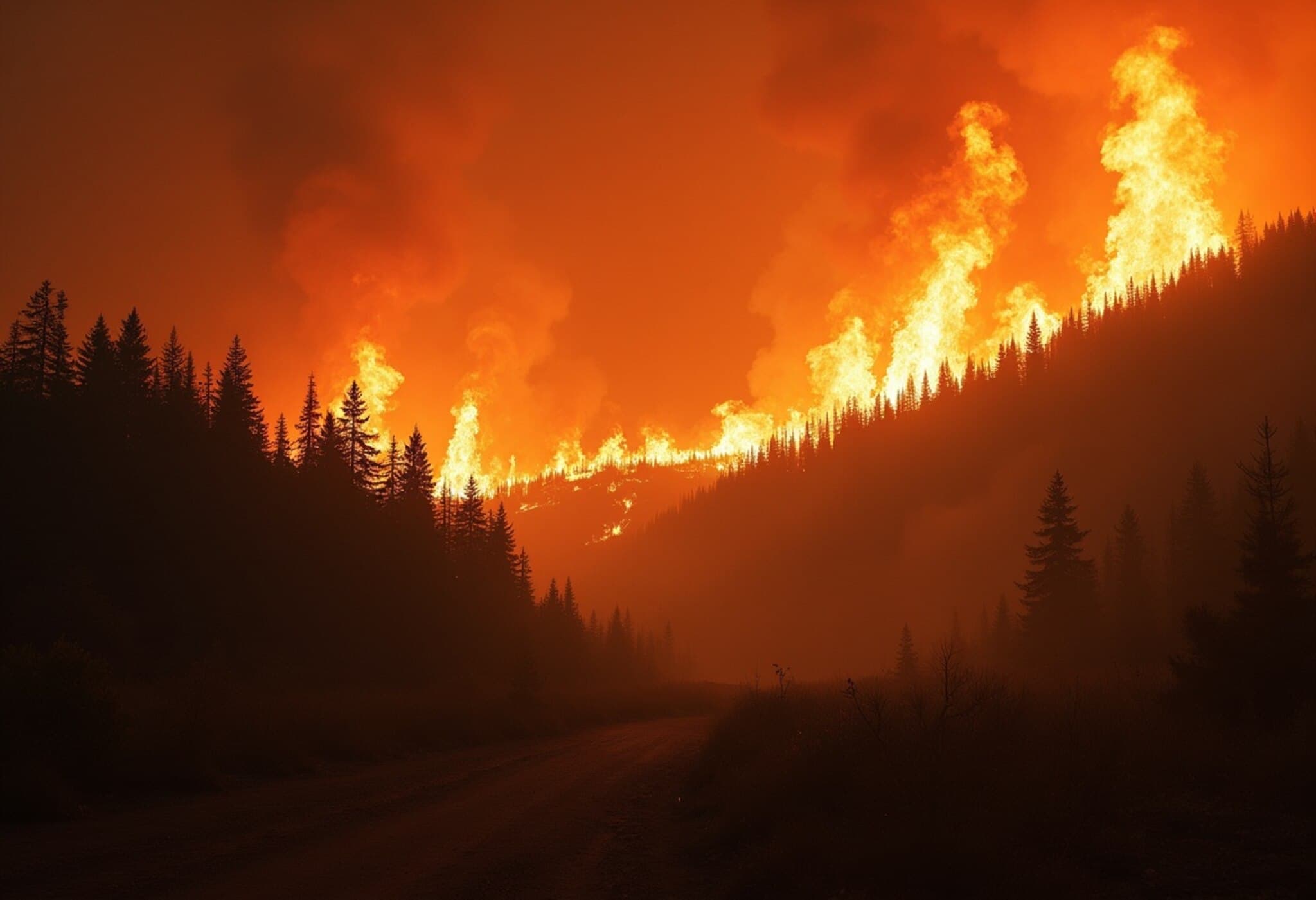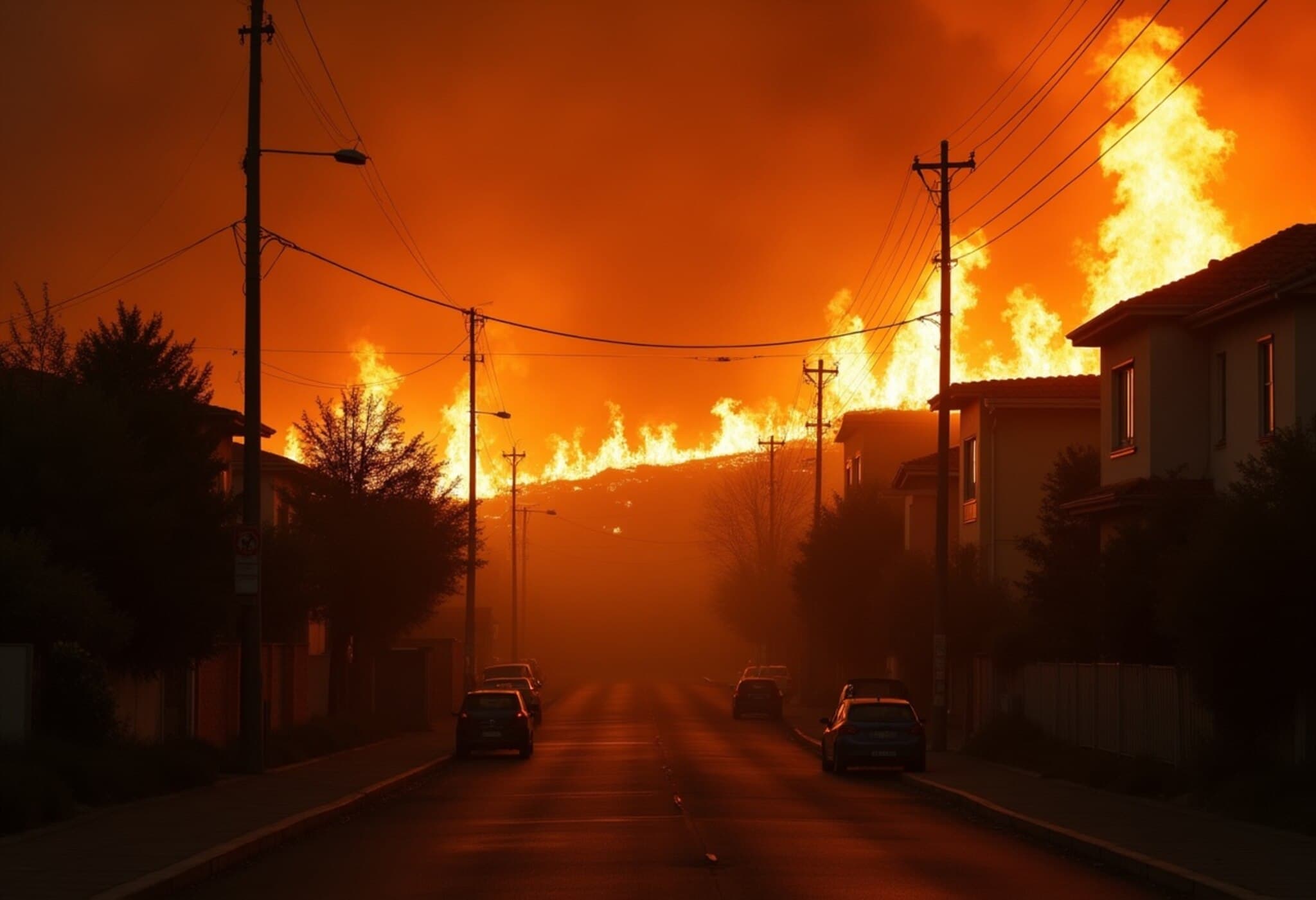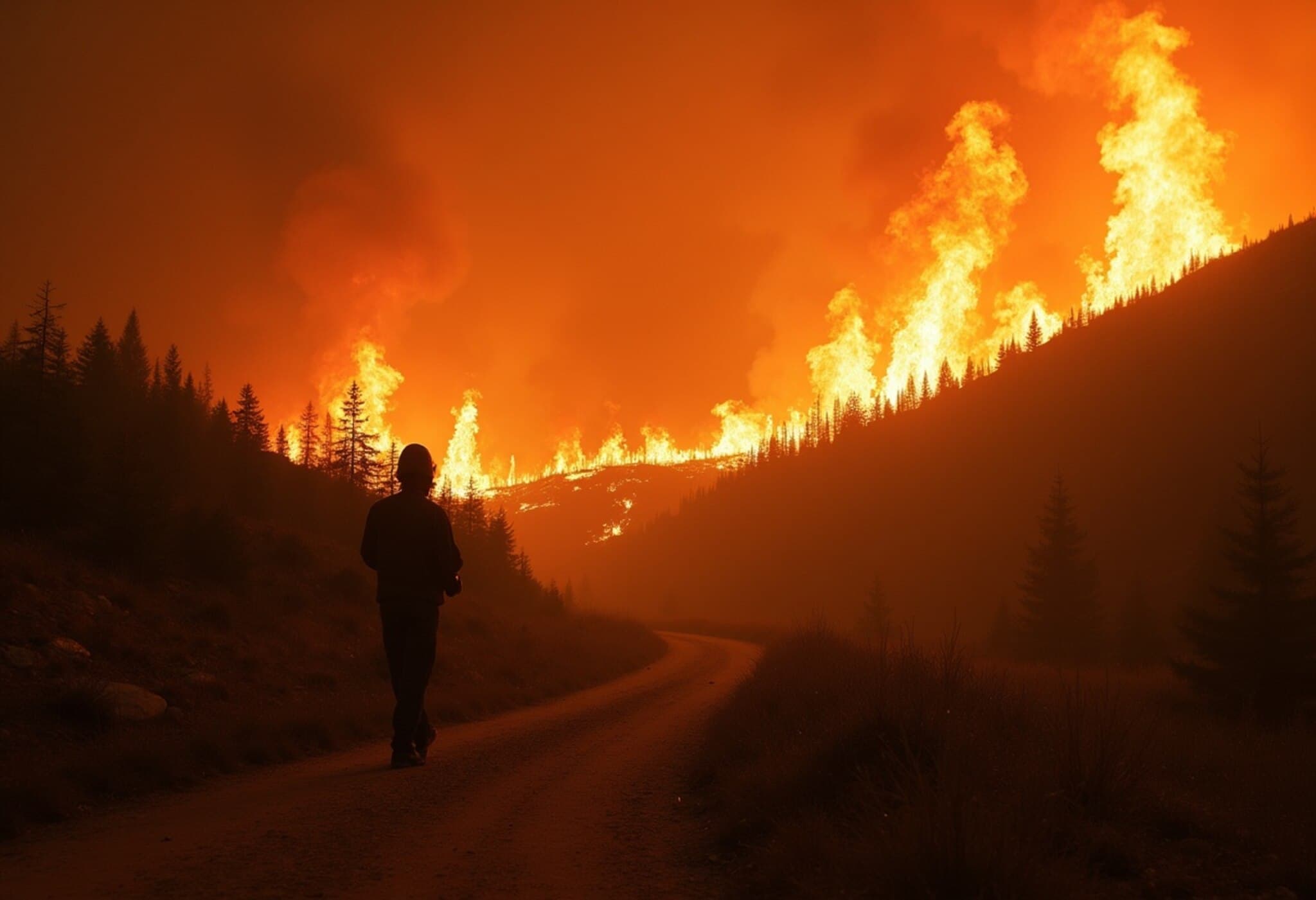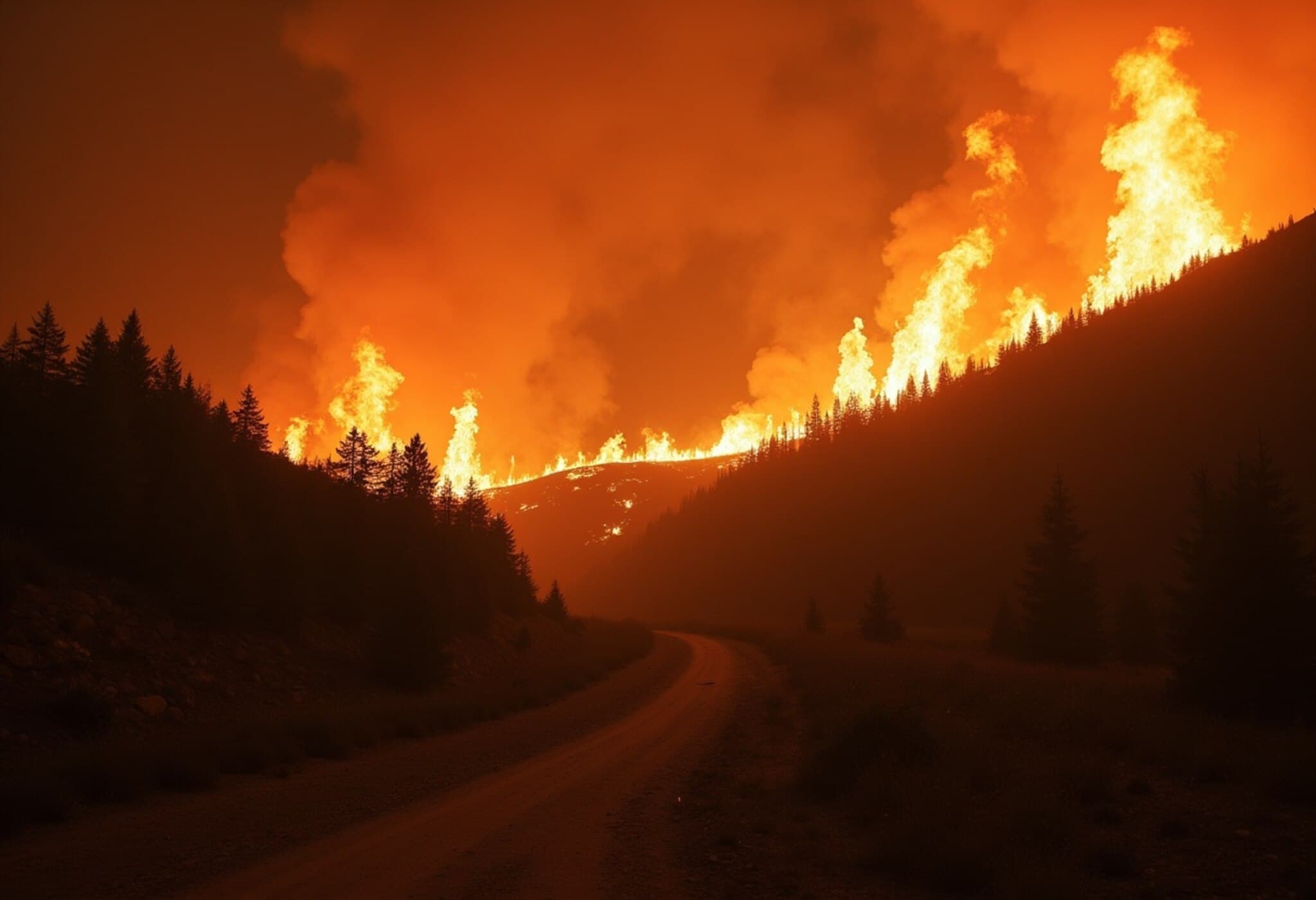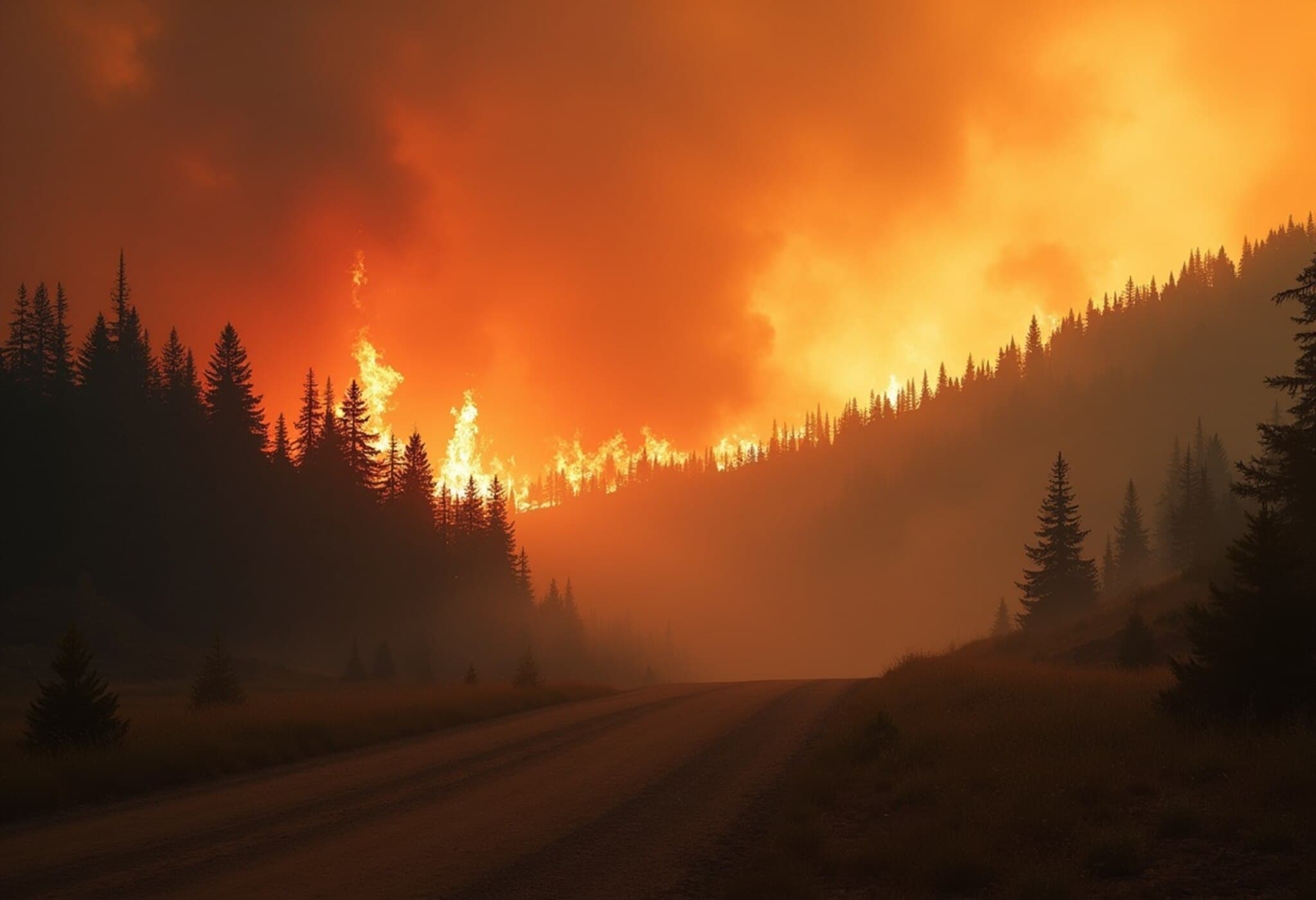State of Emergency Declared in Squamish as Wildfire Advances
A severe wildfire near Squamish, a town just 64 kilometers north of Vancouver, has prompted authorities to declare a state of emergency and warn residents to be ready for evacuation at a moment’s notice. This escalating situation underscores the intensity of Canada's wildfire season, which is growing more severe each year.
Communities on High Alert Amid Growing Fire Danger
British Columbia’s emergency management officials issued a late Tuesday alert urging Squamish residents to prepare for a potential evacuation. The town, nestled close to Vancouver’s metropolitan region with over three million inhabitants, faces an unprecedented threat as flames edge ever nearer.
Local residents like 19-year-old skateboard coach Max Whittenburg shared their shock. “I've never seen a fire in Squamish, at all, ever,” he admitted, emphasizing the unusual and alarming nature of the current fire. Max and others have been busy prepping their homes and essentials, ready to leave should conditions worsen.
Similarly, teenager Luke Procter spoke about staying vigilant, helping his father ready their vehicle and trailer for a swift departure if needed.
Fires Outside Traditional Zones Raise Concern
Forest researchers point out that fires creeping closer to coastal areas like Squamish are particularly troubling. These regions have historically seen fewer wildfires, though the frequency and intensity are now on the rise. While coastal fires are generally less fierce than their inland counterparts, experts warn their increasing occurrence signals a troubling trend.
Canada Faces One of Its Worst Fire Seasons Yet
This year’s wildfire season has already surpassed recent annual averages, with more than 220 active fires nationwide and about half deemed uncontrollable. Over 3.3 million hectares—an area roughly equivalent to Belgium—have burned so far.
The smoke has even crossed the Atlantic, reaching Europe, highlighting the vast scale of these blazes.
Regional Impacts and States of Emergency
Central provinces like Saskatchewan and Manitoba declared states of emergency in late May due to early fire outbreaks. Saskatchewan’s Premier described the situation as "a vicious couple of weeks" battling relentless wildfires. Fortunately, some evacuees are now preparing to return home as conditions slightly improve.
Meanwhile, mega-fires continue to blaze in parts of western Alberta, British Columbia, and northern Ontario—the country’s most populated province.
Climate Change: The Underlying Catalyst
Experts attribute the increasing severity and frequency of wildfires to human-induced climate change. Canada has experienced warming rates at least twice the global average, leading to reduced snowpacks, shorter winters, and early onset of hot, dry summers—all prime conditions for fires to ignite and spread.
Environment Canada forecasts above-normal temperatures across much of the country this summer, compounding existing drought-like conditions in many regions. This combination is expected to elevate wildfire risks significantly in the months ahead.
New fires are detected daily across Canada, often started by accidental human activity or lightning strikes. With the fire season intensifying, continuous vigilance and preparedness are critical for vulnerable communities.
Preparing for the Unpredictable Fire Season Ahead
- Residents near fire zones are urged to assemble emergency kits and evacuation plans.
- Authorities continue monitoring fire activity closely, ready to issue evacuation orders if needed.
- Public awareness and cooperation remain vital to minimize fire risks and ensure safety.
As wildfires become an increasingly devastating annual reality, communities like Squamish exemplify the urgent need for resilience and readiness amid a changing climate.

